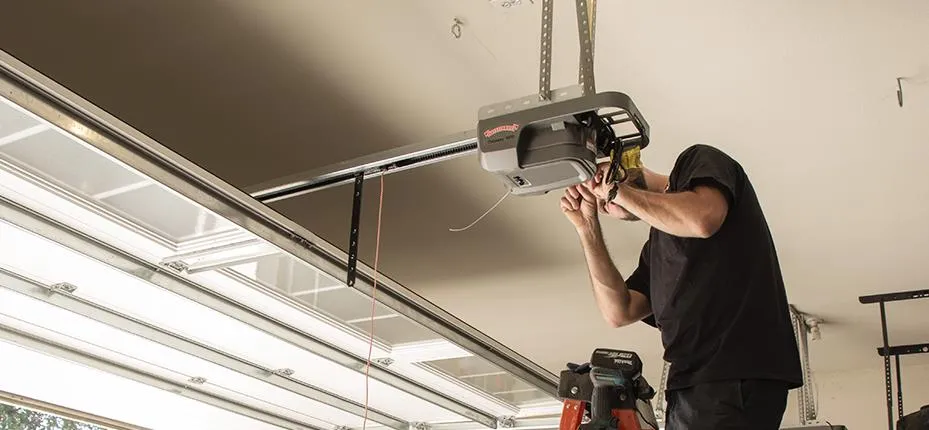Garage door openers are an essential part of modern homes, providing convenience, security, and safety. These devices have become a staple in residential properties, automating the process of opening and closing garage doors with just a push of a button. Understanding how a garage door opener works involves exploring the various components and mechanisms that make this system efficient and reliable. This article delves into the detailed workings of a garage door opener, explaining its components, operation, and the types of openers available on the market.
What is a Garage Door Opener?
A garage door opener is an electromechanical device that controls the opening and closing of a garage door. It consists of several key components that work together to automate the process. The main parts include the motor, drive mechanism, track, trolley, and remote control system. Together, these components provide a seamless and secure way to operate the garage door.
Types of Garage Door Openers
There are several types of garage door openers, each with its own set of advantages and disadvantages. The main types include:
- Chain Drive Openers
- Belt Drive Openers
- Screw Drive Openers
- Direct Drive Openers
- Jackshaft Openers
1. Chain Drive Openers
Chain drive openers are the most common type of garage door opener. They use a metal chain to drive the trolley and move the door.
Advantages:
- Cost-Effective: Chain drive openers are generally the most affordable option.
- Durable: They are robust and can handle heavy doors.
Disadvantages:
- Noise: Chain drive openers can be noisy, making them less suitable for garages located near living spaces.
2. Belt Drive Openers
Belt drive openers use a rubber belt instead of a chain to move the trolley.
Advantages:
- Quiet Operation: Belt drive openers are much quieter than chain drive openers.
- Smooth Movement: They provide smoother operation with less vibration.
Disadvantages:
- Cost: Belt drive openers tend to be more expensive than chain drive openers.
3. Screw Drive Openers
Screw drive openers use a threaded steel rod to move the trolley.
Advantages:
- Low Maintenance: Screw drive openers have fewer moving parts, requiring less maintenance.
- Quiet: They operate quietly compared to chain drive openers.
Disadvantages:
- Temperature Sensitivity: Screw drive openers can be affected by temperature changes, which may impact performance.
4. Direct Drive Openers
Direct drive openers use a stationary chain embedded in a sturdy rail, with only one moving part—the motor.
Advantages:
- Quiet: These openers are among the quietest available.
- Reliable: With fewer moving parts, there is less that can go wrong.
Disadvantages:
- Cost: Direct drive openers can be more expensive than other types.
5. Jackshaft Openers
Jackshaft openers are mounted on the wall beside the garage door, freeing up ceiling space.
Advantages:
- Space-Saving: Ideal for garages with limited overhead space.
- Quiet: These openers operate quietly.
Disadvantages:
- Cost: Jackshaft openers are typically more expensive and may require professional installation.

Key Components of a Garage Door Opener
- Motor
- Drive Mechanism
- Track and Trolley
- Remote Control and Sensors
- Control Panel and Keypad
- Safety Mechanisms
1. Motor
The motor is the heart of the garage door opener. It provides the power needed to move the door up and down. Most residential garage door openers use an electric motor that operates on alternating current (AC) or direct current (DC). The motor’s power is typically measured in horsepower (HP), with common ratings being 1/3, 1/2, and 3/4 HP, depending on the weight and size of the garage door.
AC vs. DC Motors:
- AC Motors: These are the traditional motors used in garage door openers. They are robust and reliable but can be noisier compared to DC motors.
- DC Motors: These motors are quieter and more efficient. They also offer soft start and stop features, reducing wear and tear on the garage door components.
2. Drive Mechanism
The drive mechanism is responsible for transmitting the motor’s power to the garage door, allowing it to open and close. There are three primary types of drive mechanisms used in garage door openers:
- Chain Drive: This is the most common and cost-effective type of drive mechanism. It uses a metal chain to drive the trolley and move the door. While reliable, chain drives can be noisy.
- Belt Drive: Belt drives use a rubber belt instead of a chain. They are quieter and smoother in operation but tend to be more expensive.
- Screw Drive: This mechanism uses a threaded steel rod to move the trolley. Screw drives require less maintenance and are quieter than chain drives but can be affected by temperature fluctuations.
3. Track and Trolley
The track is a metal rail that guides the trolley, which is connected to the garage door. As the motor operates, the drive mechanism moves the trolley along the track, opening or closing the door. The trolley is equipped with a release mechanism, allowing the garage door to be operated manually in case of power failure or maintenance.
4. Remote Control and Sensors
Modern garage door openers are equipped with remote control systems that allow users to operate the door from a distance. These systems use radio frequency (RF) signals to communicate with the opener. Each remote control is programmed with a unique code to prevent unauthorized access.
Types of Remote Controls:
- Standard Remotes: These are handheld devices with one or more buttons to open and close the door.
- Keychain Remotes: Smaller versions that can be attached to a keychain for convenience.
- Wireless Keypads: Mounted outside the garage, these keypads require a code to operate the door.
Sensors: Safety sensors are crucial components that prevent the garage door from closing if an obstruction is detected. These sensors are typically installed on either side of the garage door, a few inches above the ground. They emit an invisible beam of light, and if this beam is interrupted, the door will stop and reverse direction.
Read more: Different Types of Garage Door Sensors
5. Control Panel and Keypad
The control panel is usually mounted on the wall inside the garage, near the door to the house. It provides manual control of the garage door opener and often includes features like a light switch and a lock button to disable the remote controls for security purposes.
Keypads are typically installed outside the garage door and allow for keyless entry. Users can enter a code to open the garage door without needing a remote control.
6. Safety Mechanisms
Garage door openers are equipped with several safety mechanisms to protect users and property:
- Photoelectric Sensors: As mentioned earlier, these sensors detect obstructions in the door’s path and prevent the door from closing.
- Auto-Reverse Function: If the door encounters resistance while closing, it will automatically reverse direction.
- Manual Release: A manual release mechanism allows users to disconnect the door from the opener, enabling manual operation in case of power failure.
- Rolling Code Technology: Modern openers use rolling code technology to enhance security. This technology changes the remote control’s code every time it is used, preventing code theft.
How Does a Garage Door Opener Work?
Your garage door opener functions through radio transmission. Each time you press the open/close button on the control pad or remote, it sends a signal to the door opener, instructing it to move the door.
Communication Between Components
- Transmitter: The control pad or remote serves as the transmitter.
- Receiver: The garage door opener itself acts as the receiver.
They communicate using a specific radio frequency, ensuring that other devices in your home, like your TV, won’t interfere with the operation of your garage door.
Safety Systems
Modern garage door openers are equipped with safety systems designed to prevent injury. One key safety feature is the photo eyes or safety sensors. These are installed on either side of the door frame, creating an invisible light beam between them.
How Photo Eyes Work:
- When the light beam is interrupted (e.g., by a person walking through the open garage door or an object like a ball resting in the door frame), the sensors signal the opener to stop operating.
- In some instances, this can also cause the closing garage door to reverse direction.
Other Common Safety Features
- Locking System: Prevents the door from being opened or closed while you’re away from home, enhancing security.
- Warning Sounds: Beeping or other audible alerts play when the door is closing, providing a warning to anyone nearby.
- Smartphone Apps: These apps notify you whenever your garage door opens or closes, allowing for remote monitoring and control.
By incorporating these safety systems, modern garage door openers ensure both the safety and security of your home, providing peace of mind and added convenience.
Read more: How Much Does It Cost to Replace a Garage Door Sensor in Australia?
Maintenance Tips for Garage Door Openers
To ensure the longevity and proper functioning of your garage door opener, regular maintenance is essential. Here are some maintenance tips:
- Lubricate Moving Parts: Regularly lubricate the chain, screw, or belt, as well as the rollers, hinges, and tracks, to reduce friction and wear.
- Check Balance: Periodically check the balance of the garage door. An unbalanced door can strain the opener.
- Inspect Safety Features: Test the photoelectric sensors and auto-reverse feature to ensure they are working correctly.
- Tighten Hardware: Check and tighten all bolts, screws, and brackets to keep everything secure.
- Replace Batteries: Replace the batteries in remote controls and keypads as needed.
- Clean Tracks: Keep the tracks clean and free of debris to ensure smooth door movement.
- Professional Inspection: Schedule an annual professional inspection to catch any potential issues early.
Read more: 10 Common Garage Door Problems and How to Fix Them
Conclusion
A garage door opener is a complex yet essential device that adds convenience, safety, and security to your home. Understanding the components and workings of a garage door opener can help you troubleshoot issues, perform regular maintenance, and make informed decisions when purchasing or upgrading your system. With various types of openers available, each with its own set of advantages, you can choose the one that best suits your needs and preferences. Regular maintenance and timely repairs will ensure that your garage door opener continues to operate smoothly and reliably for years to come.






